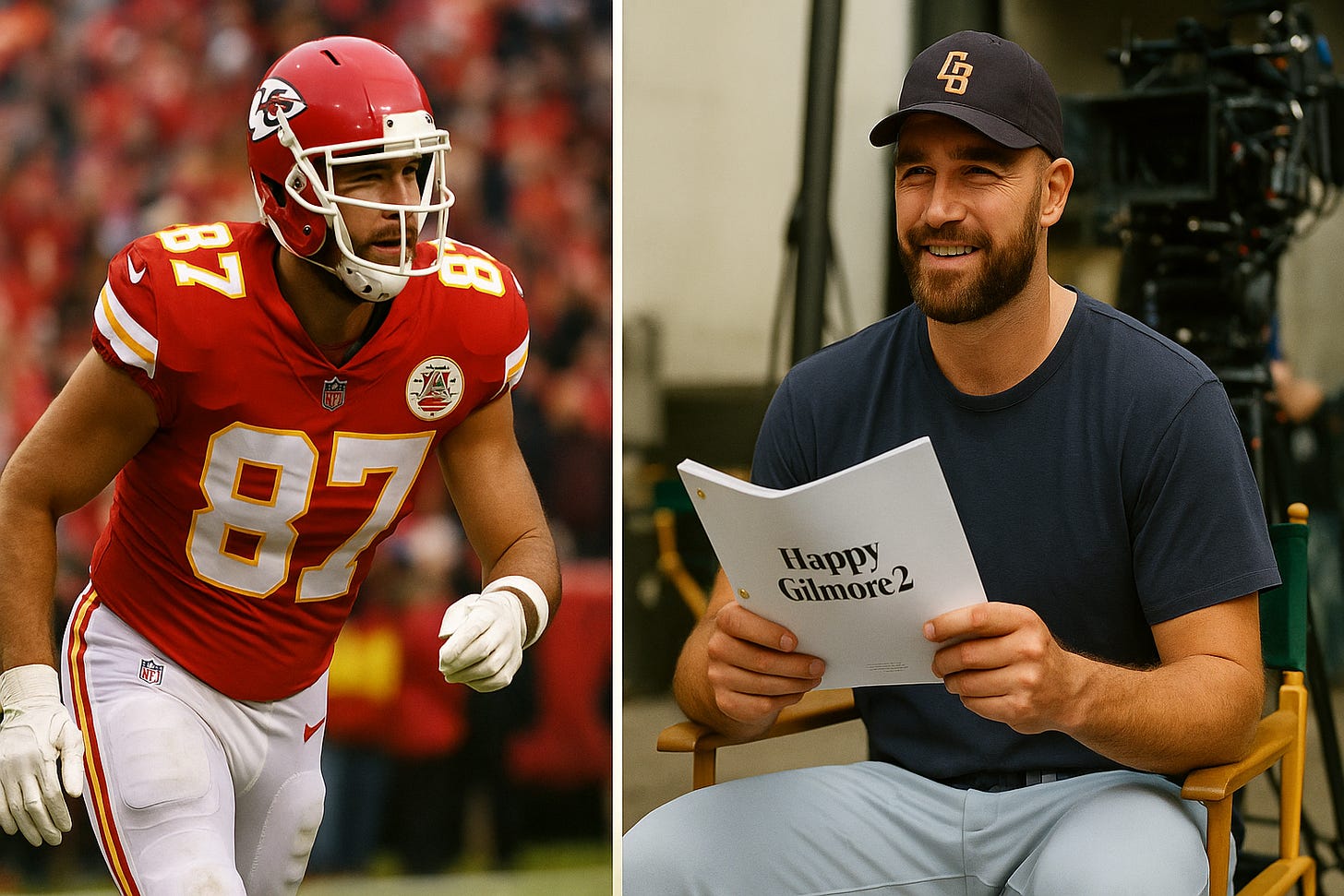Who Wants the Kelces’ Transition to Hollywood?
What Travis and Jason’s entertainment ambitions reveal about the new athlete economy and what happens when the content outweighs the talent
Travis Kelce just showed up in Happy Gilmore 2 (it’s hard to believe the original came out in 1996)
It’s his latest Hollywood move, and he’s not even retired yet. He’s already hosted Are You Smarter Than a 5th Grader, executive produced My Dead Friend Zoe, joined Ryan Murphy’s Grotesquerie, and now he’s riding Sandler nostalgia in a Netflix sequel built …
Keep reading with a 7-day free trial
Subscribe to Disruptive Play: Challenging Sports & Media Norms to keep reading this post and get 7 days of free access to the full post archives.


